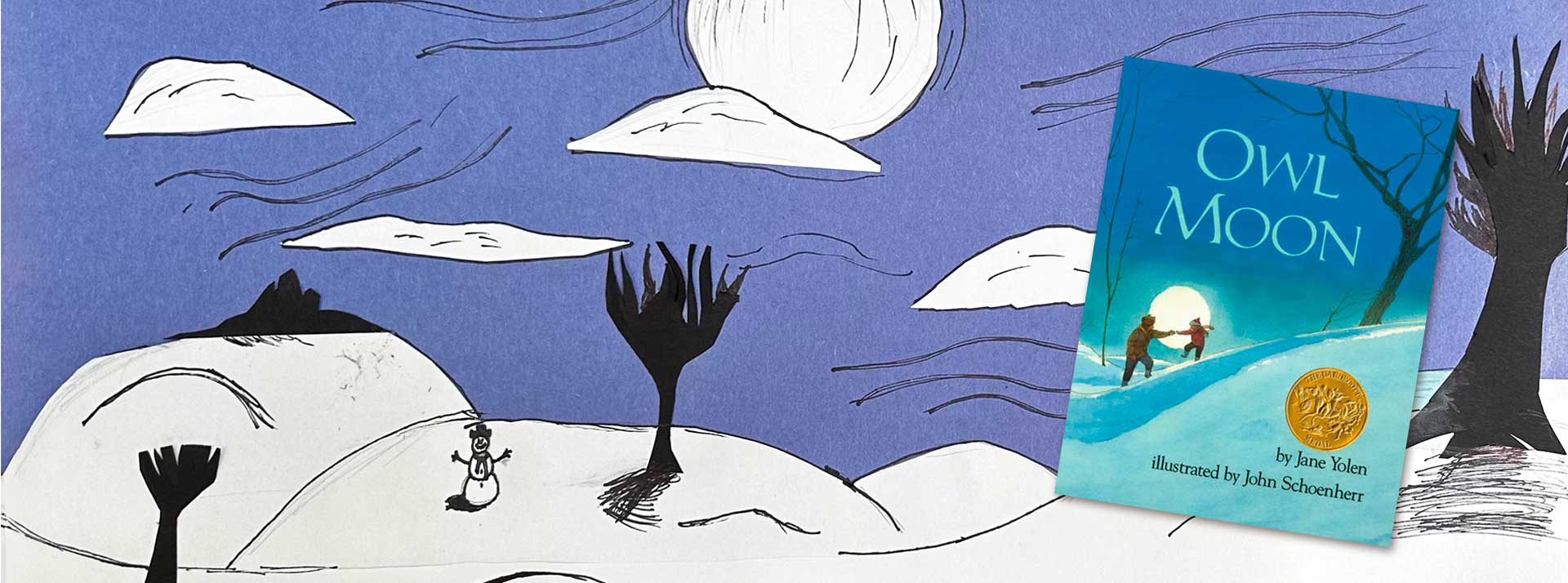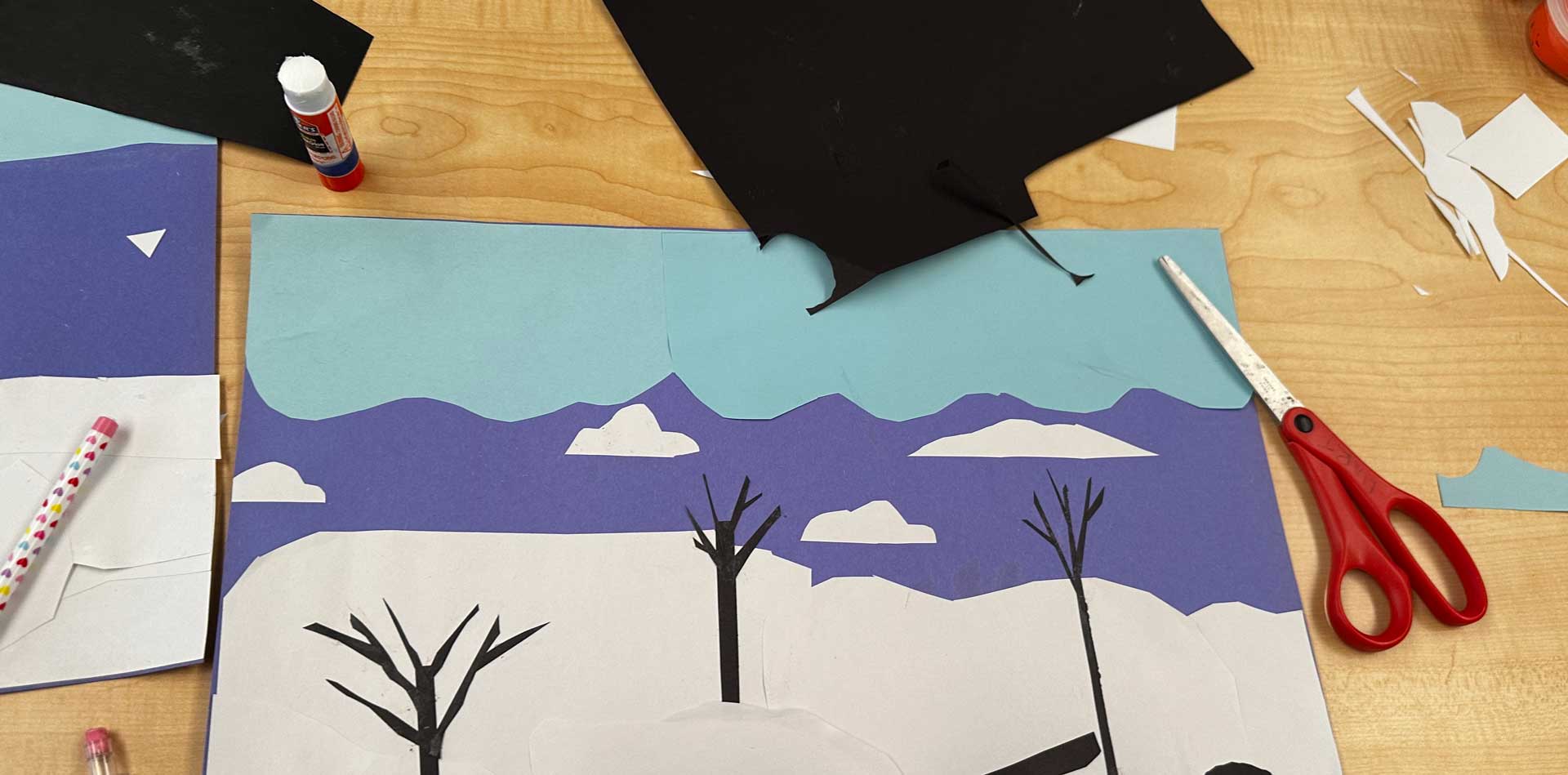
Owl Moon by Jane Yolen: Discussion & Activities
Owl Moon is an exquisitely-written and illustrated children’s picture book. Yolen sets her story late at night while the moon is full and snow covers the land. A young girl has been waiting to go out owling with her dad, “for a long long time.” Through the young girl’s voice, we learn her thoughts, hopes and fears as she makes her way through the woods with her father. The illustrations in the book beautifully bring the story to life.
Owl Moon is a wonderful example of the use of beautiful language! If you have time, it’s a terrific book to teach similes and metaphors.This may be used as a “stand alone, fill in, let’s take a break for the day” type of lesson but can also be woven into a larger unit of language study which might include an extended read aloud of Poppy, by Avi, or Owls in the Family, a parts of speech study or it may be a literacy component of a larger science unit on animals or habitat. Given that the book tells the story of a very fun adventure, children are often very excited to talk about owling as well.
Grades 2-6
Thank you for the Read-Aloud, SchoolTube!
Pre-Reading Discussion
- There is so much to focus on in this book. Begin with the covers-front and back together.
- What time of day does it look like?
- How about the time of year?
- Weather?
- Who do you think the characters will be and what are they doing?
- The language is stunning. If your students are familiar with them, they can listen for similes and metaphors or jot them down and share after the reading, or hold up one finger when they hear a simile and two if they hear a metaphor.
- If you’re going to complete the writing assignment, first discuss point of view or perspective.
- It’s important to talk about the narrator and how if the narrator were different, the point of view or perspective would be different.
- Students should pay attention to the young girl telling the story and her age and size (compared to her dad, and the trees that were giant statues) and how all of that affects the telling of the story. For example, if the dad was telling the story it would be told in a very different way.
Discussion
- What happened in the story?
- What is owling?
- Why did the girl have to wait so long to go owling?
- Why did they wait for a full moon?
- Why do you have to be quiet and “make your own heat” when you go owling?
- How did the little girl feel when they finally saw an owl? How do you know she felt that way?
- Would you like to go owling? Why? Why not?
Writing Activities
- Loosely (not getting too hung up on remembering all the details and specifics), retell the story from a different point of view.
- Imagine you’re the dad, or the owl, or the moon.
- Tell what happened that night in the forest.
- Try to use really descriptive language (and similes and metaphors, if applicable).
Art
Layered Paper Cutting Landscape Scene

- Supplies:
- White, light blue, dark blue, and black sheets of construction paper. (12”x18”)
- Scissors
- Glue
- Thin black marker (optional)
- Directions:
- Cut your white paper in half (width-wise)–the “hamburger way.”
- Glue it to the dark blue paper.
- Cut hills or ponds from the light blue paper and glue them along the horizon, and maybe down the end of the paper.
- Dot your hills with a few drifts of snow–and glue them in place.
- Use the black paper to create trees, bushes, or shrubs. The trees can be assembled as you glue, adding smaller branches after you add trunks and main branches. Note: trees and bushes in the foreground (front) of the paperscape are larger than those in the background.
- If you’d like to, you can add a white moon.
Science Ideas
There are many directions that can connect to science and outdoor education. Here are a few ideas:
- Owl Moon could be utilized as part of a unit on seasons of the year or an animal unit.
- Students could explore other nocturnal animals.
- You may wish to engage local bird sanctuaries or education centers to have them visit your class.
- Students could dissect owl pellets.
- Research and other areas for exploration:
- Birds of prey
- Habitats
- Hibernation
